Dublin-born, Los Angeles-based architect Paul McClean knows a thing or two about how the One Per Cent like to live.
“We’ve been putting working beauty salons in homes for 15 years,” he says. “It started with a Middle Eastern family who explained that they didn’t want to go out to get their hair or nails done, and they’d rather bring friends to the house so they could do it all together.” When you have the space, why not, right?
McClean has been described time and time again as LA’s “megamansion king”, and no wonder. He’s famously the architect behind what’s being called “the most expensive house in America”.
The One, a 105,000 sq ft mansion on a 5-acre parcel in Bel Air, was created for developer Nile Niami a decade ago. The house, bearing McClean's trademark ultramodern design, recently went on the market for $350 million. For that outlay, you can enjoy 42 bathrooms and 21 bedrooms, as well as a jogging track, bowling alley, a philanthropy wing, a cigar lounge, a custom tequila bar and several other starry amenities.
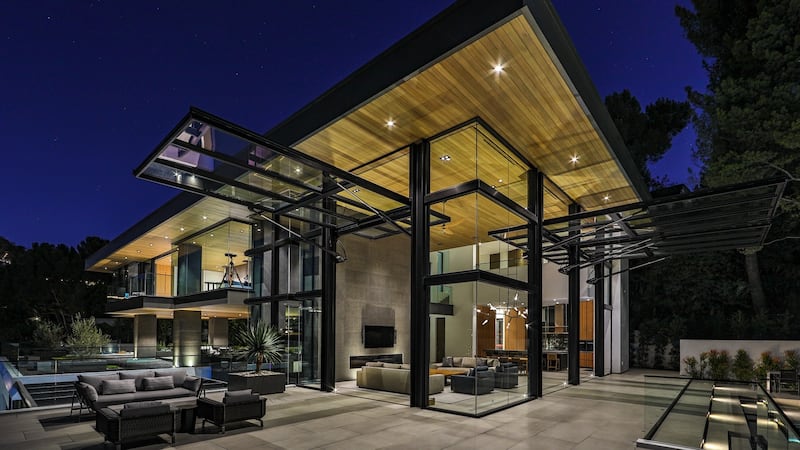
Of his decision to incorporate cigar lounges and philanthropy wings into the property, McClean says: “Realistically, you’re looking at comparing the house to palaces or hotel resorts. One big reason to buy a house like that is entertainment, or running charity events which accommodate large groups. The bigger the house, the less likely it is to be [the client’s] primary home.
“Another big thing would be staff quarters,” he says. “Larger homes need people. They don’t run themselves. Security is also hugely important; people want gated houses if possible. The gym is also a huge component of most clients’ lives. The very, very successful take fitness more seriously than the rest of us, and very often they need large-scale gyms. Wellness is a big thing. We’ve done hydrotherapy treatment pools, plunge pools, and horizontal showers.”
As in, a bath? “More like a heated stone platform where water drops onto you,” McClean laughs.
The luxury doesn’t end there.
“It wouldn’t be atypical for clients to have three or four water features, and everyone loves a media room, often kitted out with stadium seating. They definitely want the whole big screen surround sound experience. I’ve done bowling alleys in houses for people. There are also large wine cellars, which is a fun thing to do. We’ve also done a lot of show garages with bars in them, because these days people are buying cars like they’re pieces of art, and they don’t want them just in a garage, they want them somewhere where they can display them.”
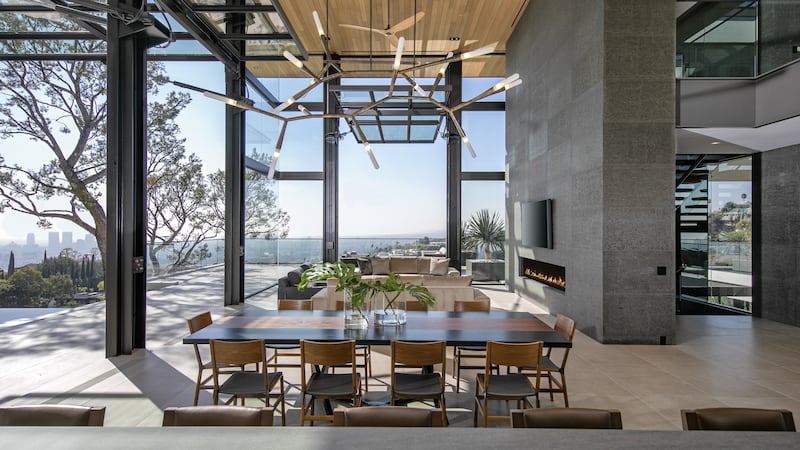
Though McClean’s average project is in the 7000-8000sq ft range, he still occasionally works on 2000sq ft properties. “People always say: ‘I didn’t realise you did properties of that size.’ We’ve been very lucky with many successes, but it doesn’t come in a nice steady stream. There can be stages of feast or famine.”
During Covid-19, the phone largely stopped ringing from February to October, though he adds it has been “off the hook” ever since.
About seven years ago, McClean was working out of his own garage in California. Since then, he has steadily built a client list. Calvin Klein is reportedly sitting pretty in another of McClean's dazzling $25 million Hollywood Hills creations. Another of property hit the headlines in 2017. 454 Cuesta Way was built by McKillen developments (run by Dean McKillen, son of Paddy McKillen). Beyoncé and Jay-Z reportedly made a bid on the property, to the tune of $125 million.
Client discretion
McClean isn’t one to be drawn on the specifics. Client discretion, he notes, is paramount.
“Some clients will say: ‘I need a certain house’ and you’re off to the races, but at the other end of the spectrum you have clients that have a very difficult time making decisions. They may be brilliant or decisive in their careers, but when it comes to this, they lack a bit of confidence. You have to work like their therapist a bit.”
It’s easy to see why McClean would endear himself to LA’s exacting clientele. Articulate, generous with his time and charming, he also cuts a very unassuming figure. He certainly doesn’t carry the air of a “megamansion king”, and his appeal is very much the better for it.
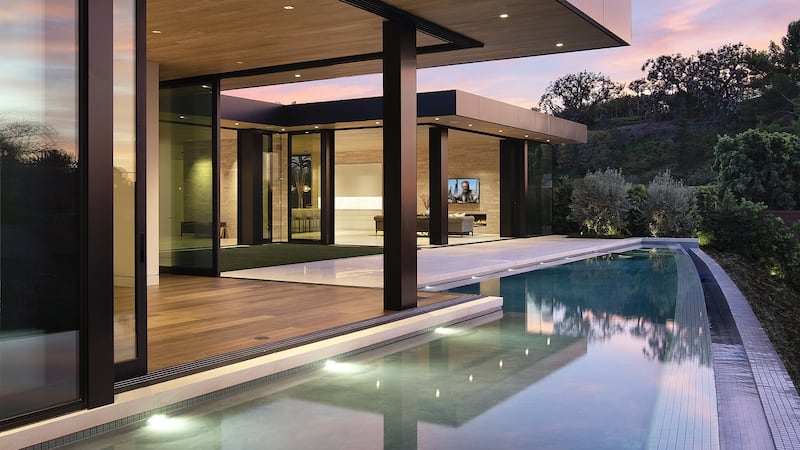
Yet even from a great geographical remove, Los Angeles was always in McClean's crosshairs.
Growing up in a semi-detached council house in the north Dublin suburb of Coolock, young Paul could probably only dream of having more space. The youngster shared his home with his homemaker mother, upholsterer father, two brothers and one sister, and there was never a doubt in his mind about what he wanted to do with his life.
“When I was a little boy, I used to draw houses all the time and I would ask my mum, ‘What’s the person that does that?’ and she told me it was an architect, so that’s what I always wanted to be,” he says. “I’m very lucky that I was on that path from day one.”
McClean enrolled in DIT Bolton Street's architecture degree (he graduated in 1994), where he came across case studies of architects like Richard Neutra and Frank Lloyd Wright: homes that were a world away from what he knew in Dublin.
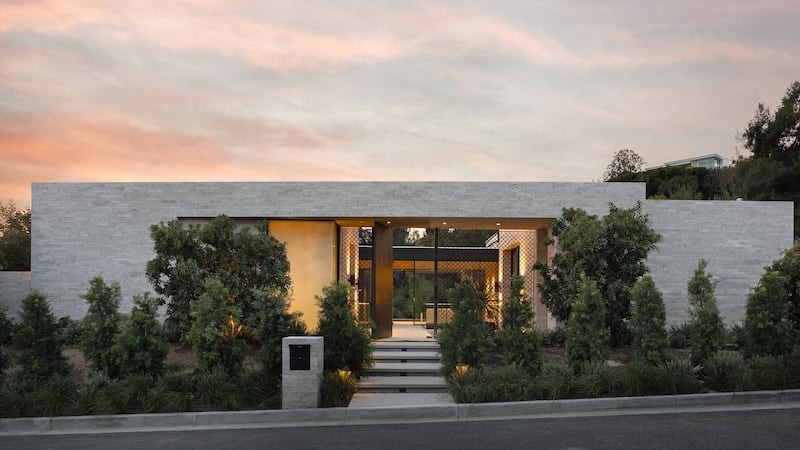
“It was a little bumpy,” he recalls. “I grew up in a very modest background and a lot of my classmates were far more travelled and had had a lot more exposure to architecture than me. There was always a little bit of catch-up.”
After the fourth year of his five-year course, he went to work for McCullough Mulvin Architects, which was instrumental in the regeneration of Temple Bar back in the early 1990s. (McClean worked on the building of the Temple Bar Music Centre on Curved Street.)
“It was a great time to be working in the centre of Dublin and I loved that experience,” he recalls. “There was a real sense that Dublin was about to change.”
Yet it wasn’t enough to distract him from his California dreams. The summer he graduated from Bolton Street, he headed west (he had friends living in the Orange County suburb of Laguna Beach). Once he got off the bus, he was struck by the light and the water views, and these remain his work’s trademarks to this day.
McClean began working at a local architect’s office, starting on small projects and renovations, some of which were no more than 2,000sq ft. While working his day job, a few people approached him to do independent projects.
“It was the year 2000 because I remember meeting someone in the run up who had a lot of plans and he asked me to look at them. On New Year’s Day I got a call, he said: ‘It’s a new millennium: we’re starting over. Design a house for us.’ It was the first project for us, and over the next six or seven months we got a few, and then we were off.”
Investor
Via the Irish community in Laguna Beach, McClean met Northern Ireland-born property investor Paddy McKillen and his wife Maura. He remodelled a house for them and in time McKillen would commission McClean to build about seven houses for himself, family members and friends. McKillen – not a man to entrust just anyone to build his homes – clearly had huge faith in the young gun. It turned out to be a big break for the young architect.
Space, incidentally, is no longer an issue for McClean, who has since created his own dream home, where he lives with his family just outside Los Angeles. “We had a site with great views and was very private, so we could have views and privacy,” he says.
“We weren’t necessarily concerned about the house size. When you’re building a house for your family you don’t want everyone to retreat to their own bedrooms. We thought a lot about the public, private spaces, especially as LA houses are often open plan. Making sure the wife was happy was very, very important,” he says.

“It’s a fringe benefit, yes,” he concedes of the Los Angeles lifestyle. “There are nice parties to go to, and there are the opportunities to meet some interesting people, but with two teenagers at home it’s all about balance and trying to spend enough time with them.”
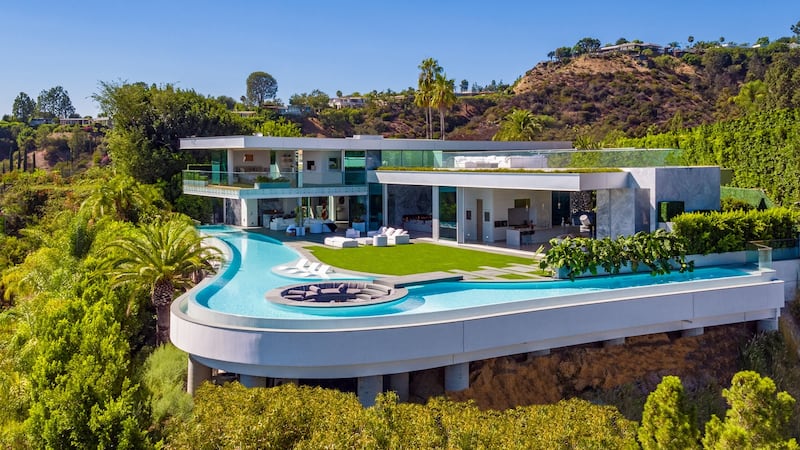
Covid-19, naturally, has put paid to his regular visits to Ireland and Germany, where his wife is from.
“I try and get back once a year to Ireland as my mum is still there,” he says. “I love getting back and wish I could get home more often. My only regret is that there’s never enough time.”
















